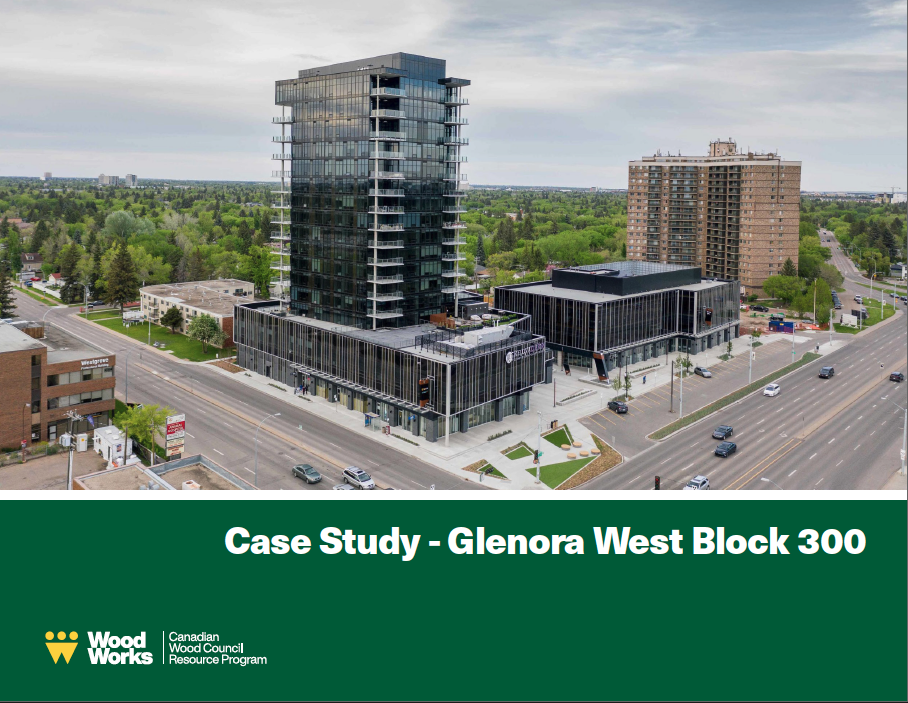Ouverture d’appel de candidatures pour les prix d’excellence en conception structurale et en construction en bois de 2025
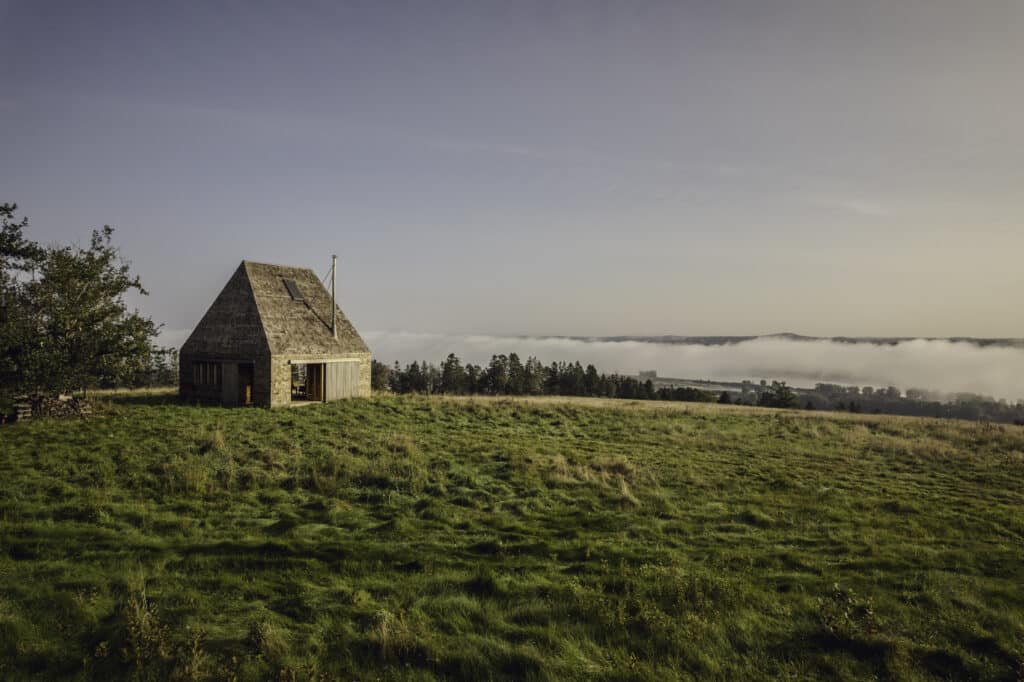
OTTAWA, ON, 23 AVR 2025 - Le Conseil canadien du bois accepte les candidatures pour les Wood Design & Building Awards 2025. Ce programme annuel, qui en est à sa 41e année, invite les architectes, les concepteurs et les équipes de projet de l'Amérique du Nord et du monde entier à soumettre leurs projets en bois les plus inspirants. "À la base, ce programme est une célébration de l'excellence architecturale ", déclare Martin Richard, vice-président du développement des marchés et des communications au Conseil canadien du bois. "Chaque année, nous sommes inspirés par les nombreuses façons dont les concepteurs exploitent la beauté polyvalente du bois, qu'il s'agisse de formes audacieuses et expressives ou d'espaces qui se transforment discrètement. Au fil des décennies, nous avons vu la créativité et le talent de centaines d'équipes de projet apporter des changements importants à l'environnement bâti, faisant passer le bois d'un matériau de niche à une ambition de conception durable et grand public. Si le programme de récompenses a toujours mis en lumière l'excellence architecturale en matière de bois, les projets primés ces dernières années ont également souvent fait preuve d'innovation, de prouesses techniques et d'un engagement fort en faveur du développement durable. Les candidatures seront examinées par un jury distingué composé d'architectes canadiens et américains. Les projets seront évalués en fonction de leur créativité, de l'excellence de leur conception et de l'utilisation innovante et appropriée du bois pour atteindre les objectifs du projet. Les catégories de prix pour 2025 sont les suivantes : Le programme comprend également plusieurs prix spécialisés : Les lauréats recevront un trophée en bois personnalisé et seront reconnus par le biais d'une annonce médiatique, des médias sociaux, d'un profil sur le réseau Wood Innovation Network et d'une couverture éditoriale dans Wood Design & Building Magazine (édition numérique). Dates clésDate de dépôt des candidatures anticipées : 31 mai 2025Date limite de soumission finale : 27 juin 2025 Pour plus d'informations et pour soumettre votre projet, veuillez consulter le site : https://cwc.ca/wood-design-and-building-awards/
Pourriture du bois et réparation
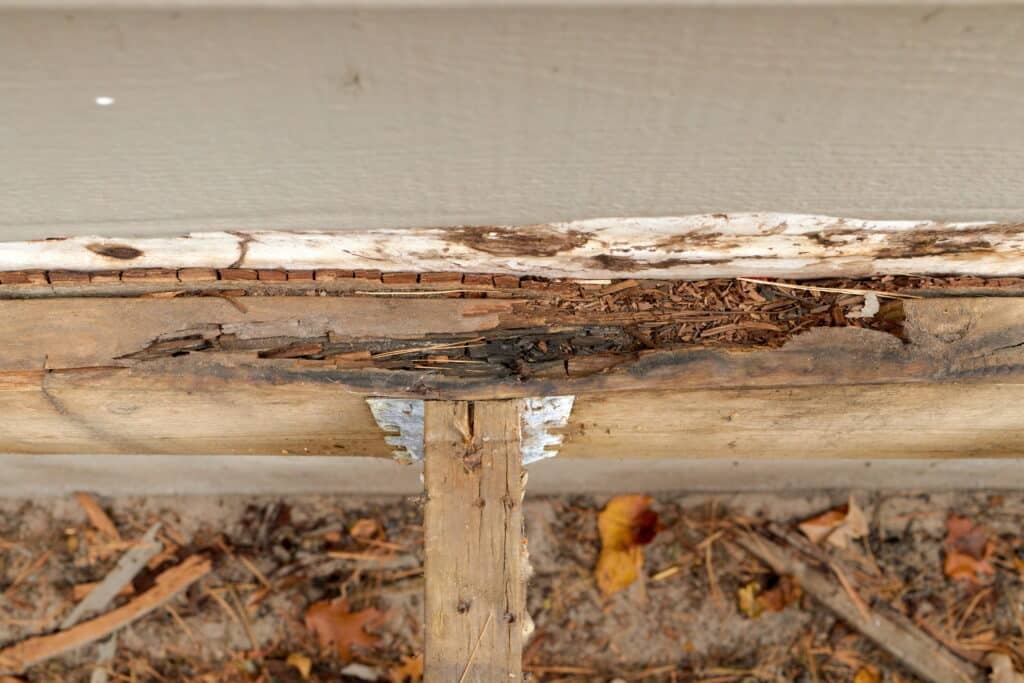
BÂTIMENTS NON ÉTANCHES ET BOIS EN DÉCOMPOSITION - QUE SE PASSE-T-IL ? En Amérique du Nord, les nouvelles semblent souvent faire état de graves problèmes d'humidité dans les bâtiments à ossature en bois. Qu'il s'agisse de la "crise des copropriétés qui fuient" à Vancouver ou du "désastre des EIFS" en Caroline du Nord, les propriétaires sont confrontés à la pourriture du bois lorsque les autres composants des murs et du toit du bâtiment ne protègent pas correctement la structure en bois contre l'humidité excessive. Il est intéressant de noter que les fuites sont également remarquées dans les gratte-ciel en acier et en béton, où elles provoquent la rouille des montants et des fixations en acier et la dégradation des plaques de plâtre. Pourquoi constatons-nous soudain autant de défaillances dans les bâtiments, y compris dans nos constructions en bois qui ont fait leurs preuves ? Il s'agit d'un problème frustrant pour tous les acteurs du secteur de la construction, car il n'y a pas de réponse facile. Il est commode de rejeter la faute sur des professionnels du bâtiment peu compétents ou sans éthique. D'autres cibles occasionnelles à blâmer sont les municipalités qui élaborent des règlements de zonage en contradiction avec les questions de performance, les codes d'efficacité énergétique qui rendent nos enveloppes de bâtiments plus étanches, les matériaux nouveaux et complexes dans nos enveloppes de bâtiments, les occupants des bâtiments qui ne pratiquent pas un entretien adéquat, ou le bois, dont certains semblent penser qu'il a perdu de sa qualité. En résumé, de nombreuses personnes ont des opinions, mais jusqu'à présent, il existe peu de données techniques solides pour répondre à ces questions. Veuillez consulter notre page de liens pour connaître certains des instituts de recherche qui travaillent dans ce domaine. Les bâtiments ont probablement toujours eu des fuites, même si ce n'est que récemment que l'humidité semble poser problème. Certains pensent que la différence réside dans le fait que les bâtiments d'aujourd'hui sont moins tolérants à ces fuites et que les bâtiments plus anciens étaient peut-être capables de s'assécher. Une autre théorie veut que les bâtiments d'aujourd'hui fuient davantage que par le passé, en raison d'erreurs de conception, d'une construction bâclée, de l'absence de surplombs, etc. Heureusement, de nombreuses personnes travaillant dans le secteur de la construction se sont intéressées à l'amélioration des pratiques de conception et de construction en matière de contrôle de l'humidité. Un certain nombre de "guides de bonnes pratiques" sont répertoriés dans notre section Liens. COMMENT SAVOIR SI LE BOIS EST POURRI ? Si le bois est fortement carié, cela sera assez évident. Le bois sera mou et peut-être même cassable à la main. Le bois pourri se brise avec un claquement de carotte, alors que le bois sain se casse en éclats. Utilisez le test du pic pour vous en assurer. MON BOIS EST TACHÉ - EST-CE QU'IL EST POURRI ? Probablement pas, s'il s'agit de bois neuf. Il existe de nombreuses sources inoffensives de taches sur le bois, notamment la saleté, la limaille de fer ou les champignons de coloration qui ne font que colorer le bois sans l'endommager. Veuillez consulter la fiche d'information "Décolorations sur les produits du bois : Causes et conséquences" pour une explication détaillée et des photos. Si le bois décoloré se trouve dans un bâtiment non étanche en cours de réparation et qu'il a pu être mouillé, effectuez le test du pic pour voir s'il est pourri - voir notre page sur l'évaluation de la pourriture. J'AI DU BOIS POURRI - QUE DOIS-JE FAIRE ? Enlevez tout le bois pourri et enlevez également deux pieds supplémentaires de bois sain tout autour de la section pourrie. Tout bois sain laissé en place après l'enlèvement du bois pourri doit être traité sur place avec un produit de préservation pénétrant. Traitez également le bois qui pourrait continuer à être mouillé après les réparations. Nous recommandons des produits de préservation contenant un fongicide diffusible à faible toxicité, tel que le borate de sodium, et des agents de formulation à faible toxicité qui facilitent la pénétration dans le bois sec, tels que le propylène glycol. Lorsque le bardage a été enlevé, que la structure a été inspectée et que le bois pourri a été enlevé, le bois laissé en place aura probablement trop séché pour permettre une utilisation efficace des formulations sans aide à la pénétration. Dans des conditions d'humidité relative élevée, le propylène glycol peut provoquer une augmentation à court terme de la teneur en humidité à la surface du bois. Pour plus d'informations, veuillez consulter notre page sur l'évaluation de la pourriture. LE BOIS SÉCHÉ AU FOUR EST-IL PLUS RÉSISTANT À LA POURRITURE QUE LE BOIS VERT OU LE BOIS SÉCHÉ À L'AIR ? L'un des avantages du bois séché au four est que les champignons vivants présents dans le bois vert ont été tués par la chaleur du four ; en d'autres termes, le bois KD est stérile à la sortie du four. En d'autres termes, le bois KD est stérile à la sortie du four. Toutefois, s'il est suffisamment humide par la suite, il est exposé au même risque de pourriture que n'importe quel autre bois. LES PRODUITS EN BOIS COMPOSITE SONT-ILS PLUS RÉSISTANTS À LA POURRITURE QUE LE BOIS MASSIF ? Les produits composites (lamellé-collé, OSB, bois de placage stratifié, etc.) ont la même résistance à la pourriture que le bois dont ils sont issus. Les adhésifs utilisés dans les produits composites n'affectent pas la résistance à la pourriture. Y A-T-IL DES TERMITES AU CANADA ? Oui, dans quelques régions limitées du pays et, dans une plus large mesure, autour de Toronto, on trouve des espèces de termites qui causent des dommages aux bâtiments. Bien que les termites constituent un problème important dans certaines parties du sud de l'Ontario, ils ne représentent globalement qu'un problème mineur dans notre pays. Ils préfèrent les conditions plus chaudes et constituent un problème beaucoup plus important dans certaines régions des États-Unis. Au Canada, nous n'avons pas le vorace termite souterrain de Formose qui cause tant de dégâts dans le sud-est des États-Unis. QU'EST-CE QUE LA POURRITURE SÈCHE ? Contrairement à ce que l'on entend souvent, la pourriture sèche ne désigne pas la pourriture qui peut se produire dans le bois sec, ou le bois qui a pourri et s'est desséché. La pourriture sèche est un type spécifique de champignon, bien que le terme soit très souvent utilisé à tort pour décrire toutes les pourritures du bois. C'est regrettable, car cela dissocie la pourriture de l'humidité. La pourriture du bois a toujours besoin d'humidité, et la clé de la durabilité du bois est le contrôle de l'humidité. Le bois qui a pourri il y a longtemps et qui est maintenant sec était humide au moment de la pourriture. Le véritable champignon de la pourriture sèche a la capacité de puiser dans une source d'eau et de conduire l'eau jusqu'à ce qui serait autrement du bois sec. Cependant, il doit mouiller le bois avant de pouvoir l'attaquer. Le véritable champignon de la pourriture sèche est plus susceptible de se trouver dans des bâtiments contenant de la brique ou de la pierre que dans des bâtiments entièrement en bois. A QUELLE VITESSE LE BOIS SE DÉGRADE-T-IL ? Il est impossible de le dire, tant les variables qui influencent le processus sont nombreuses. En laboratoire, dans des conditions idéales pour les champignons de pourriture, le bois peut pourrir assez rapidement.
The Exchange
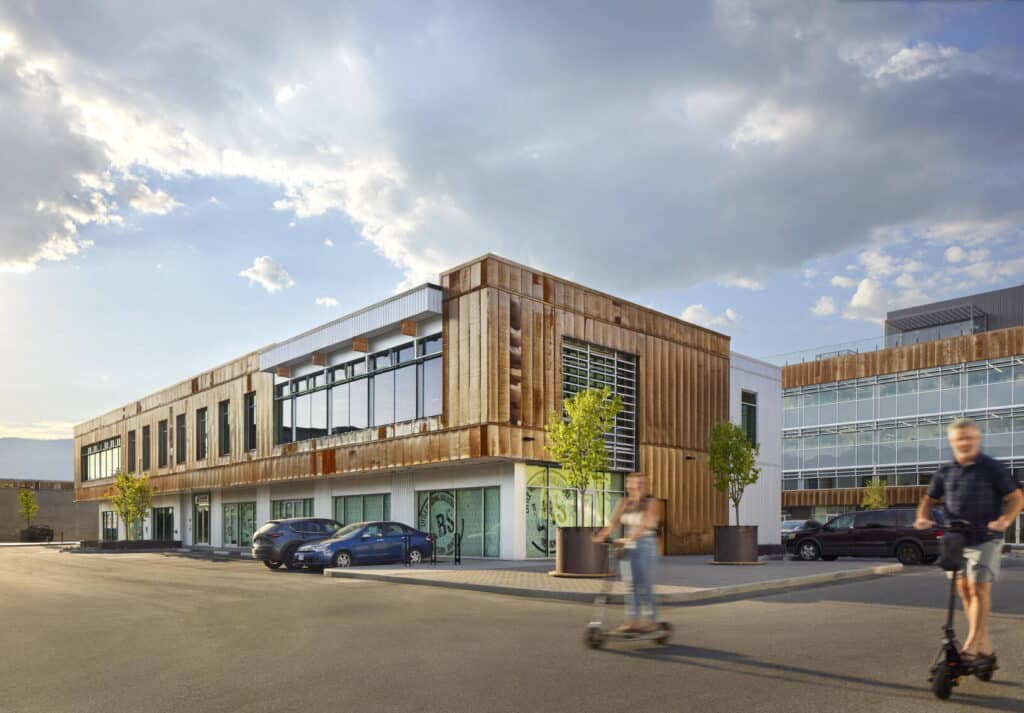
ARCHITECTE : Faction Architecture Inc. INGÉNIEUR EN STRUCTURE : RJC Engineers PROMOTEUR : Faction Projects Inc. DIRECTEUR DE LA CONSTRUCTION : Faction Construction CONSULTANT EN CODE DU BÂTIMENT : GHL Consultants Ltd. PHOTOS : Courtesy of naturally:wood Dans le quartier industriel en pleine évolution de Kelowna, en Colombie-Britannique, The Exchange est une démonstration avant-gardiste de ce qui est possible lorsque l'ambition architecturale s'allie à la précision technique. Conçu et développé par Faction Architecture et Faction Projects, le bâtiment allie le bois de masse aux matériaux conventionnels dans un système hybride qui met en valeur à la fois la performance structurelle et la responsabilité environnementale. Au cœur du système structurel se trouve le bois lamellé-collé (NLT), utilisé pour les planchers et les toits. Le NLT est un produit de bois de masse formé par la fixation mécanique de bois de construction dimensionnel pour créer des panneaux solides - une approche bien adaptée aux applications de bois exposé qui privilégient la durabilité, la texture et la simplicité de fabrication. Pour ce projet, l'équipe a fabriqué les panneaux en interne en utilisant des matériaux et des artisans locaux. Si cela lui a permis de mieux contrôler les coûts et le calendrier, cela a également posé des problèmes de conception et de conformité. L'équipe a opté pour un profil NLT cannelé afin d'améliorer l'aspect visuel et les performances acoustiques. Comme la conception du panneau différait des normes prescriptives, elle devait être approuvée en tant que solution alternative dans le cadre du Code de la construction de la Colombie-Britannique. Une analyse approfondie a été menée pour démontrer la conformité aux exigences en matière de résistance au feu, de vibrations et de portance. S'appuyant sur les données des essais de résistance au feu de la NLT, l'équipe de conception a minimisé les vides entre les lamelles pour améliorer le comportement à la carbonisation et a effectué des essais de charge physique à l'Okanagan College pour confirmer les performances en matière de résistance et de rigidité. Les panneaux NLT sont complétés par un système de poteaux et de poutres en lamellé-collé qui forme la sous-structure, soutenue par des noyaux d'ascenseurs et d'escaliers en béton. Ensemble, ces éléments soutiennent un programme qui comprend des espaces commerciaux et d'industrie légère au niveau du sol, avec deux à trois étages d'espaces de bureaux ouverts au-dessus. Un patio sur le toit offre une vue panoramique, renforçant l'attrait du projet pour les entreprises créatives et les locataires soucieux de l'environnement. The Exchange présente également une approche réfléchie de l'enveloppe du bâtiment, un facteur clé pour atteindre l'étape 3 du BC Energy Step Code, l'étape la plus élevée actuellement applicable aux bâtiments non résidentiels dans la région. L'enveloppe à haute performance comprend une combinaison de bardage en acier résistant aux intempéries et en tôle ondulée, des fenêtres en verre à haute performance, une isolation extérieure semi-rigide, un pare-pluie respirant, un revêtement en contreplaqué, des montants en bois, une isolation en matelas, des plaques de plâtre et un pare-vapeur en polyéthylène.Les murs à ossature légère en bois contribuent à la performance de l'enveloppe de deux manières importantes : 1) le bois a une conductivité thermique plus faible que les autres matériaux, ce qui réduit considérablement les ponts thermiques, et 2) la configuration des murs à ossature en bois permet de poser une isolation plus épaisse dans les cavités entre les ossatures. Cette approche intégrée - combinant la construction en bois apparent, l'efficacité de l'enveloppe et la fabrication locale - a permis à l'équipe du projet de livrer un espace aussi performant techniquement qu'esthétiquement. Et avec plus de 90% de la surface locative occupée à l'achèvement, il est clair que les locataires réagissent à la fois à l'aspect et à la logique du bâtiment. The Exchange crée un précédent pour la construction en bois de masse accessible sur des marchés plus petits, en particulier dans des contextes où un processus de fabrication rationalisé et une boucle de contrôle de conception solide peuvent aider à combler le fossé entre l'ambition durable et les contraintes budgétaires. Alors que Faction Projects continue de travailler sur les phases restantes du projet, The Exchange est à la fois un prototype technique et un succès commercial - la preuve qu'une construction à haute performance et à faible émission de carbone peut être aussi pratique qu'inspirante.
Conception en bois : Un guide pour les architectes et les éducateurs

Ce Guide est conçu pour aider les enseignants à augmenter la part du bois dans leurs programmes déjà très chargés, en exposant les étudiants aux défis et aux opportunités uniques de la conception avec des systèmes en bois avancés, dans le contexte du programme et des critères de performance des étudiants établis, maintenus et évalués par le Conseil canadien de certification en architecture.
Le Bois – Conception & Construction, vol 24, numéro 96
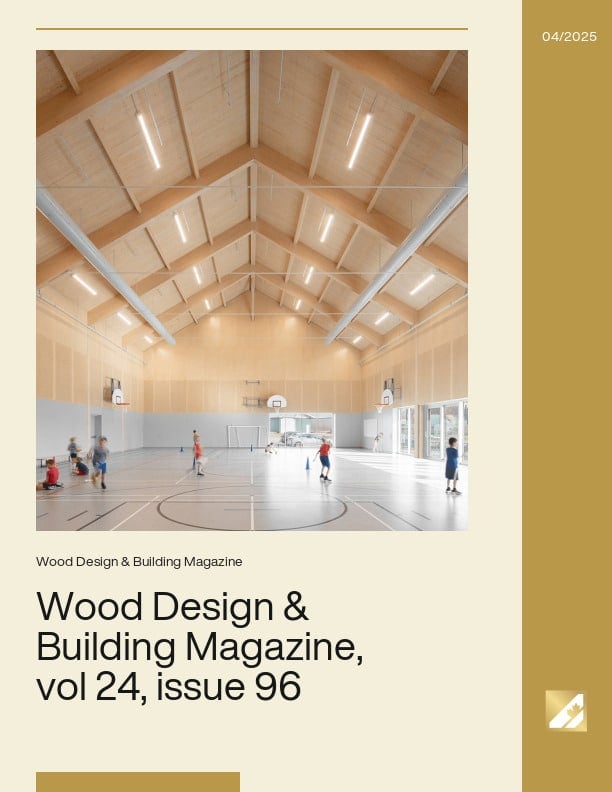
Les bâtiments qui résistent à l'épreuve du temps ne sont pas seulement durables, ils sont chéris. Lorsque nous investissons dans des matériaux de qualité et une bonne conception, nous pouvons créer des bâtiments auxquels les gens s'attachent. Comme vous le découvrirez dans ce numéro, de nombreux entrepôts et usines en bois massif construits au début des années 1900 restent aujourd'hui un élément essentiel de nos villes, non pas parce qu'ils remplissent toujours leur fonction initiale, mais parce que les gens les apprécient suffisamment pour les adapter, les restaurer et les réutiliser, en leur donnant une nouvelle fonction. Cent ans plus tard, les structures résilientes se présentent sous de nombreuses formes nouvelles. La construction modulaire, par exemple, a connu une croissance significative ces dernières années, car cette forme de construction est passée d'une méthode de construction autrefois considérée comme inférieure à une méthode sur laquelle on s'appuie pour construire des bâtiments durables à haute performance. Outre nos articles sur les bâtiments historiques en bois et la construction modulaire, ce numéro met également en lumière des projets remarquables et des tendances émergentes qui façonnent l'environnement bâti d'aujourd'hui. Des structures innovantes en bois de masse aux solutions de conception avant-gardistes, nous explorons la manière dont l'artisanat réfléchi et l'ingénierie intelligente continuent de définir les espaces que nous construisons - et ceux que nous conservons.
Exigences en matière de contreventement latéral - Partie 9 du Code du bâtiment de la Colombie-Britannique 2024

Objet : Cette publication fournit des conseils détaillés sur les exigences du BC Building Code 2024 concernant le contreventement latéral des maisons à ossature en bois de la partie 9. Elle explique les exigences en matière de matériaux de construction et les méthodes de construction nécessaires pour garantir la sécurité et la résistance des maisons aux charges sismiques et éoliennes. Impact:Ce guide illustré a pour but d'aider les concepteurs et les constructeurs de la Colombie-Britannique à comprendre et à mettre en œuvre les exigences actualisées du Code en matière de contreventement latéral. Ce faisant, il améliore l'intégrité structurelle des maisons, garantissant une meilleure protection contre les risques environnementaux, en particulier les tremblements de terre. Partenaires : Conseil canadien du bois, Conseil national de recherches, Province de la Colombie-Britannique, Université d'Ottawa.
Le Bois – Conception & Construction, vol 24, numéro 95

Guide de la construction en bois massif encapsulé dans le code du bâtiment de l'Ontario
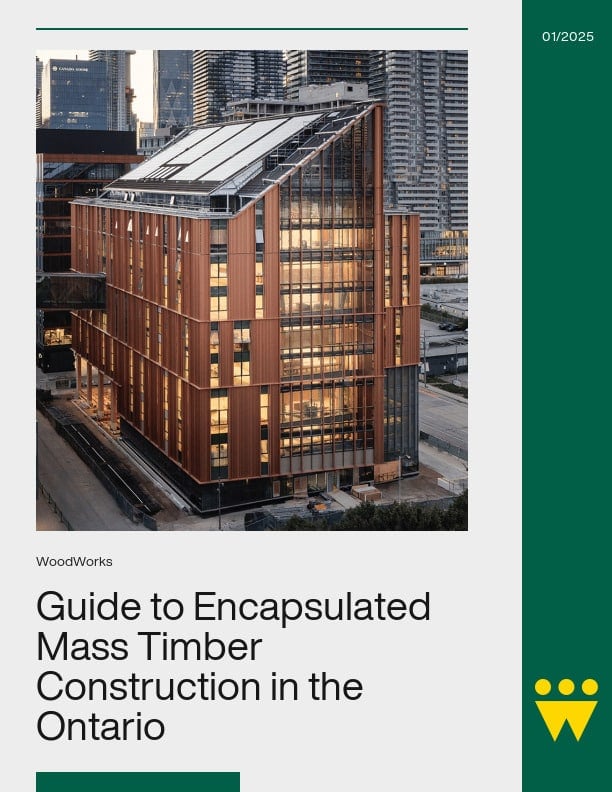
Le Guide to Encapsulated Mass Timber Construction in the Ontario Building Code - Second Edition est une ressource complète conçue pour aider les concepteurs, les responsables des codes et les professionnels du bâtiment à comprendre et à appliquer les dernières dispositions du Code du bâtiment de l'Ontario relatives à la construction en bois massif encapsulé (EMTC), qui entreront en vigueur le 1er janvier 2025. Élaboré par le Conseil canadien du bois et WoodWorks Ontario en collaboration avec Morrison Hershfield (maintenant Stantec), le guide explique les exigences techniques, les principes de sécurité incendie et les considérations de conception propres à l'EMTC, avec des références claires aux articles pertinents du Code du bâtiment de l'Ontario. Il couvre tous les aspects de la construction, depuis les spécifications des éléments en bois massif jusqu'aux matériaux d'encapsulation, en passant par les limites d'utilisation et d'occupation, les scénarios d'utilisation mixte et les dispositions relatives à la conception structurelle, à la séparation des environnements et à la sécurité incendie pendant la construction. Destiné à être lu conjointement avec le Code du bâtiment de l'Ontario, il ne s'agit pas d'un guide de conception, mais plutôt d'un outil permettant de distiller des réglementations complexes en informations pratiques et accessibles, afin de permettre aux professionnels de concevoir, d'examiner et d'approuver en toute confiance les projets d'EMTC, tout en garantissant la conformité et en optimisant les performances. Avis de correction : Une version précédente de ce document contenait une petite erreur à la page 19. Dans cette version électronique du document (mise à jour le 12 août 2025), le troisième point principal de la section 5.1.1 a été corrigé.
Plan d'action pour la construction avancée en bois
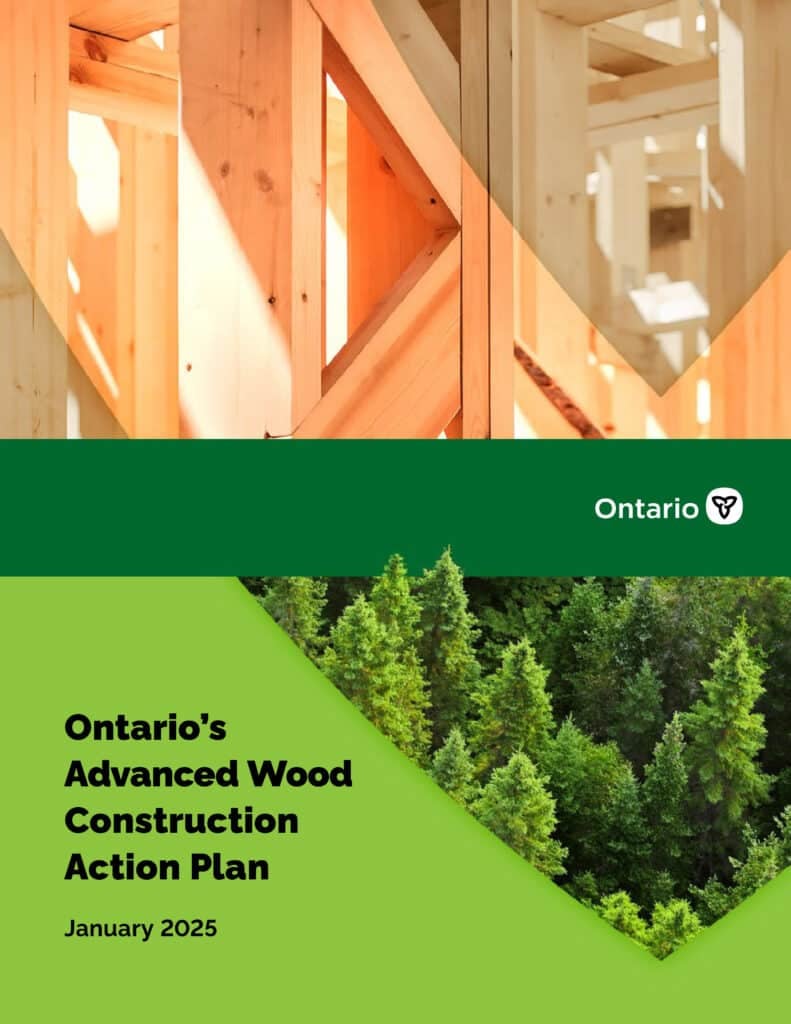
Historique Tall-Wood Toronto

Avec l'aimable autorisation du Mass Timber Institute Il y a beaucoup à apprendre des entrepôts résistants et adaptables qui bordent les rues des districts industriels historiques du Canada. Historical Tall-Wood Toronto" est une base de données probante de bâtiments vernaculaires en briques et poutres de la fin du XIXe siècle et du début du XXe siècle qui ont été construits selon les spécifications et la technologie de construction limitant les risques d'incendie de la construction en gros bois d'œuvre (mill-construction) à Toronto.
La Conférence d’Ottawa sur les solutions de conception et de construction en bois de 2025 sera présentée le 5 février 2025 au Centre national des Arts
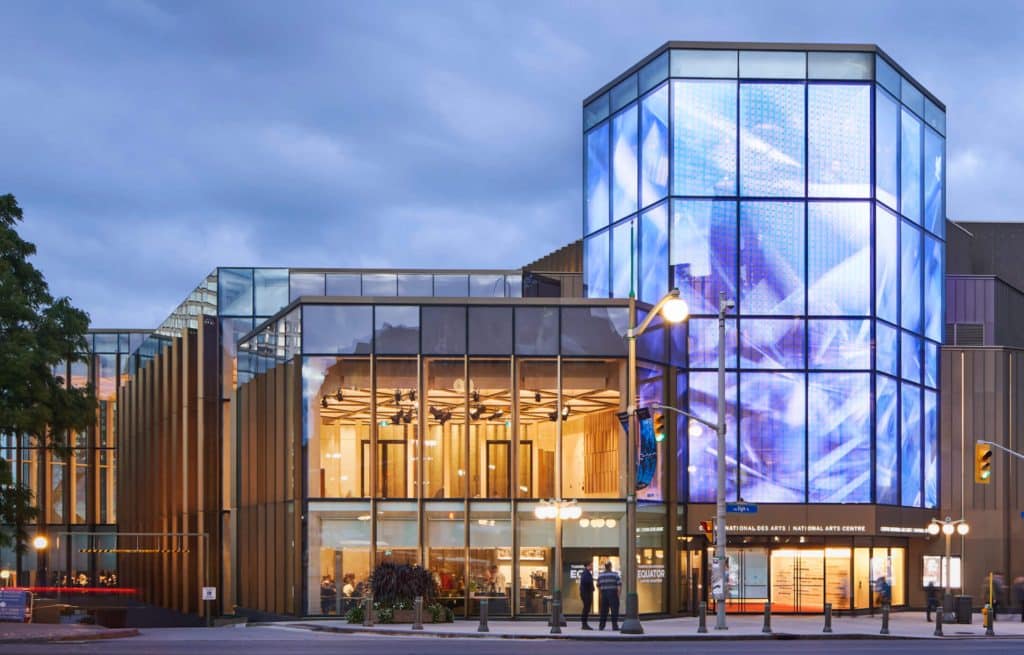
Le 19 décembre 2024 (Ottawa) - La Conférence d'Ottawa sur les solutions en bois 2025 sera présentée le mercredi 5 février 2025, de 8 h à 17 h, au Centre national des Arts, situé au 1, rue Elgin, à Ottawa. Lancée il y a plus de 20 ans pour servir les professionnels de la conception et de la construction qui s'intéressent à la construction en bois, cette conférence est passée d'une rencontre de niche à une pierre angulaire de l'éducation professionnelle, stimulée par la demande croissante pour la construction durable en bois. Le programme offre un éventail de présentations - des approfondissements techniques aux études de cas inspirantes - qui s'adressent aux participants à chaque étape de leur parcours professionnel, des nouveaux venus aux experts chevronnés. Les participants peuvent également profiter de précieuses occasions de se connecter, de collaborer et d'étendre leurs réseaux professionnels au sein de la communauté du bois. Les organisateurs de la conférence sont ravis d'accueillir Christophe Ouhayoun de KOZ Architectes (France) qui partagera ses connaissances sur le développement innovant et collaboratif du Village des Athlètes des Jeux Olympiques de Paris. Sa présentation portera également sur les efforts actuellement déployés pour convertir ces structures en logements permanents indispensables, en soulignant que ce développement progressif du bois de masse est un modèle d'adaptabilité et de durabilité. Un autre point fort du programme est l'hommage rendu au site lui-même. Donald Schmitt, CM, de Diamond Schmitt Architects, présentera la revitalisation du Centre national des Arts, en offrant un aperçu des coulisses de la structure en bois et du processus de préfabrication qui ont transformé ce bâtiment emblématique en un point de repère moderne. D'autres présentations techniques porteront sur la gestion du son et des vibrations dans les bâtiments en bois massif, sur l'accroissement de la capacité canadienne de construction en bois industrialisé, sur l'évolution des produits du bois dans notre climat changeant, et sur la valeur de la construction à ossature de bois conventionnelle dans les petites communautés où elle offre des possibilités d'emploi, avec un accent particulier sur les projets de logement indigène. L'inscription anticipée au prix de $99+HST est disponible jusqu'à la fin du mois de décembre. Au début de l'année, l'inscription à la conférence sera de $149 +HST. Les délégués peuvent trouver la conférence Ottawa Wood Solutions sur Eventbrite ou accéder directement à l'inscription en ligne en cliquant sur le lien suivant : https://www.eventbrite.ca/e/2025-ottawa-wood-solutions-conference-tickets-1080654991169. Un nombre limité de laissez-passer à prix réduit est disponible pour les éducateurs de niveau postsecondaire et les étudiants inscrits à des programmes d'études en AEC+D. Veuillez contacter Kelsey Dayler pour plus d'informations : kdayler@cwc.ca.
Glenora West Block 300
